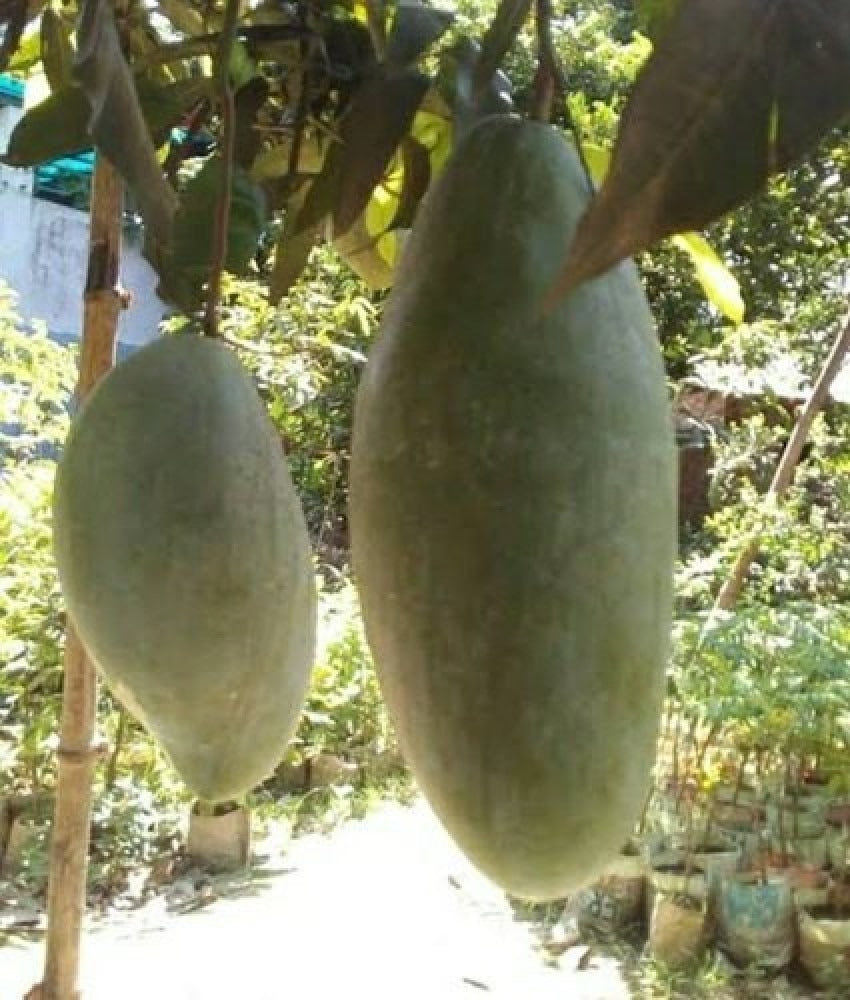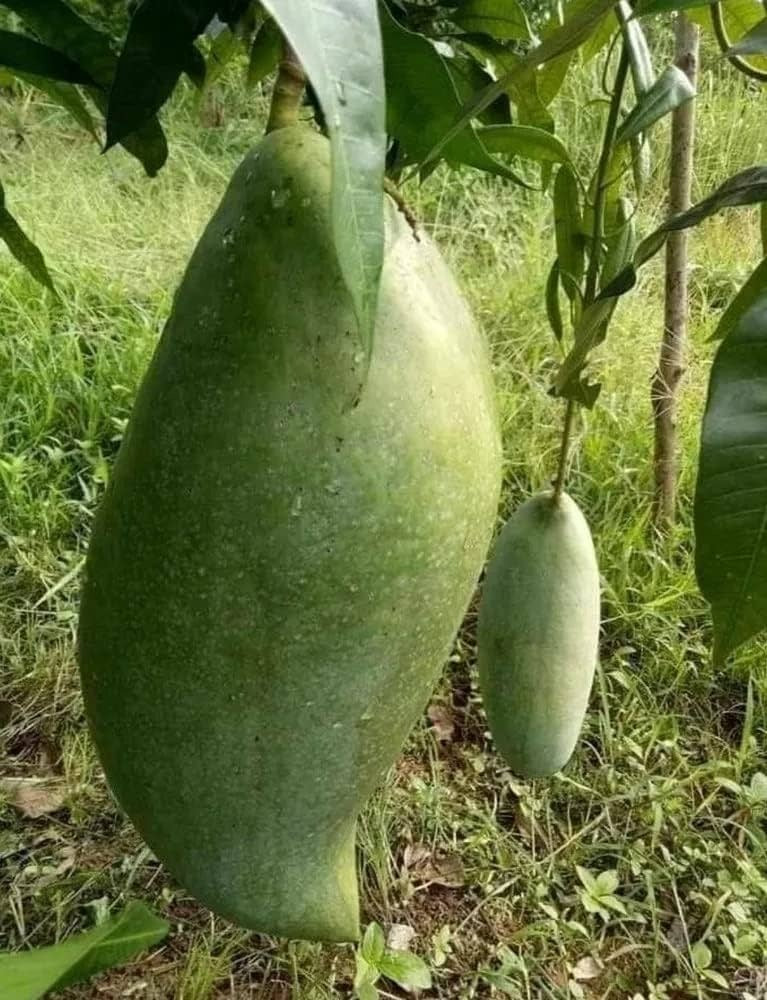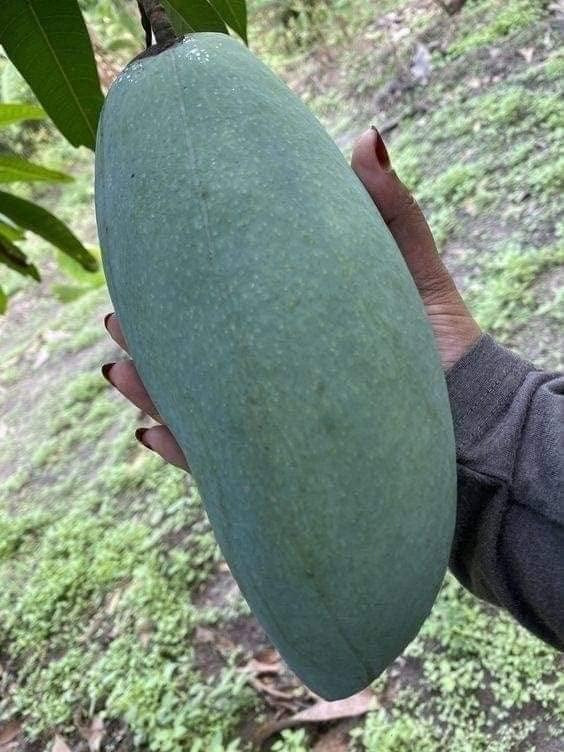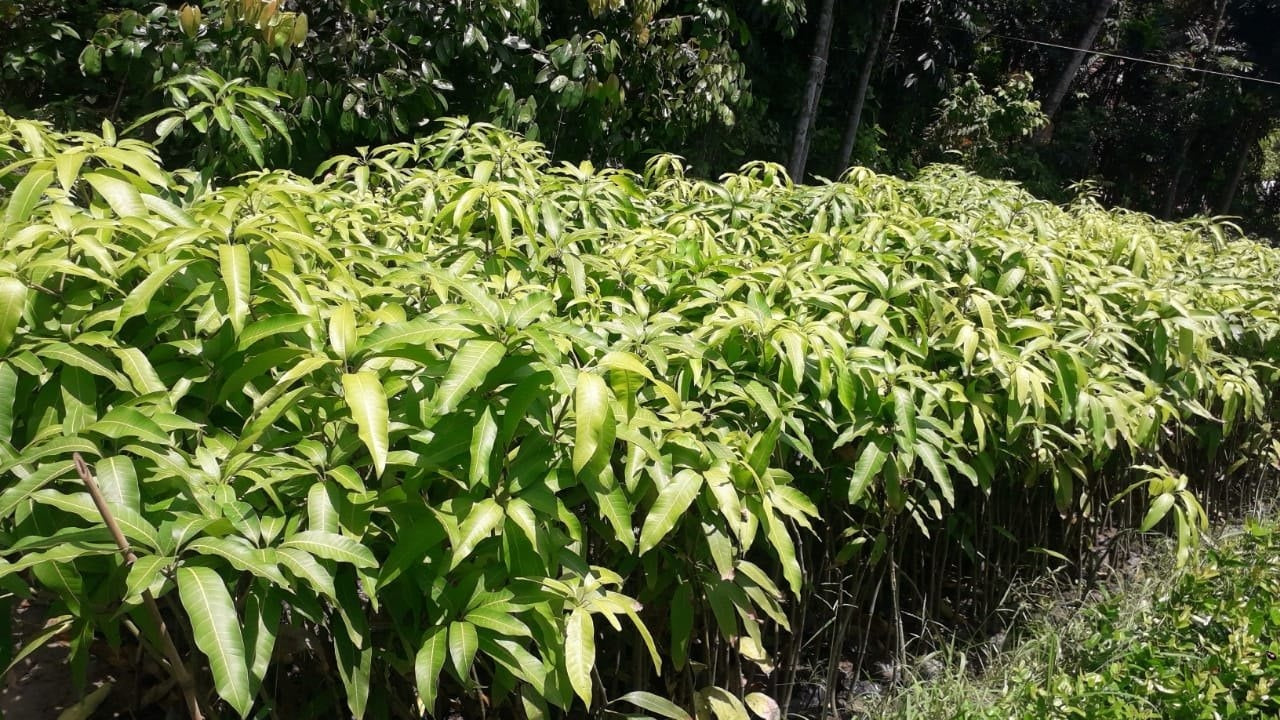Plantparadise
Brunei King Mango Plant
Brunei King Mango Plant
Regular price
Rs. 950.00
Regular price
Rs. 1,459.00
Sale price
Rs. 950.00
Unit price
per
Couldn't load pickup availability
Description
Mango trees grow to 30–40 metres (98–131 feet) tall, with a crown radius of 10–15 m (33–49 ft). The trees are long-lived, as some specimens still fruit after 300 years.
In deep soil, the taproot descends to a depth of 6 m (20 ft), with profuse, wide-spreading feeder roots and anchor roots penetrating deeply into the soil.[1] The leaves are evergreen, alternate, simple, 15–35 centimeters (6–14 inches) long, and 6–16 cm (2+1⁄2–6+1⁄2 in) broad; when the leaves are young they are orange-pink, rapidly changing to a dark, glossy red, then dark green as they mature.[1] The flowers are produced in terminal panicles 10–40 cm (4–15+1⁄2 in) long; each flower is small and white with five petals 5–10 millimeters (3⁄16–3⁄8 in) long, with a mild, sweet fragrance.[1] Over 500 varieties of mangoes are known,[1] many of which ripen in summer, while some give a double crop.[11] The fruit takes four to five months from flowering to ripening.[1]
The ripe fruit varies according to cultivar in size, shape, color, sweetness, and eating quality.[1] Depending on the cultivar, fruits are variously yellow, orange, red, or green.[1] The fruit has a single flat, oblong pit that can be fibrous or hairy on the surface and does not separate easily from the pulp.[1] The fruits may be somewhat round, oval, or kidney-shaped, ranging from 5–25 centimeter's (2–10 in) in length and from 140 grams (5 oz) to 2 kilograms (5 lb) in weight per individual fruit.[1] The skin is leather-like, waxy, smooth, and fragrant, with colors ranging from green to yellow, yellow-orange, yellow-red, or blushed with various shades of red, purple, pink, or yellow when fully ripe.
Ripe intact mangoes give off a distinctive resinous, sweet smell.[1] Inside the pit 1–2 mm (0.039–0.079 in) thick is a thin lining covering a single seed, 4–7 cm (1.6–2.8 in) long. Mangoes have recalcitrant seeds which do not survive freezing and drying.[12] Mango trees grow readily from seeds, with germination success highest when seeds are obtained from mature fruits.
Materials
Materials
Shipping & Returns
Shipping & Returns
Dimensions
Dimensions
Care Instructions
Care Instructions








